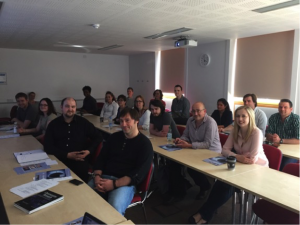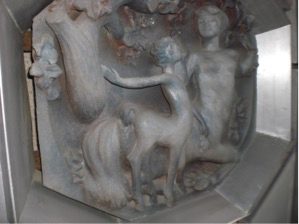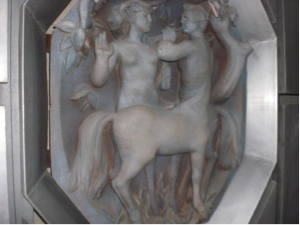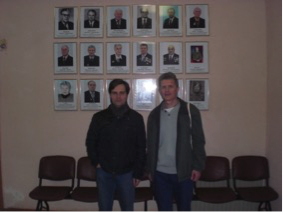In a recent hat-trick of papers, Nicholas Newton-Fisher has challenged the way we see the mating strategies of our nearest primate relatives.
Mating strategies can be defined as sets of decisions that animals make to maximize their reproductive success. For males, the main issue is adapting these strategies to gain access to females in a way that optimizes their chances of becoming a father, preferably many times over. For chimps, Nick makes the point that, although many people have looked at mating strategies, few have looked at the most fundamental problem that mating strategies need to solve, that is finding mates in the first place. One exception to this is “Dunbar’s general model” of male mating strategies, which suggests that males in most populations of chimpanzees pursue a ‘roving’ strategy: that is, looking for and isolating fertile females who are responsive to their advances. Nick argues that the way chimpanzee behaviour is considered uses this model as a starting assumption suggesting that it both functions to monitor the female reproductive state and to deter these females from other groups of males.
This may be erroneous, however, as it seems to contradict current observations of chimpanzee behaviour and Nick has proposed a radical alternative: namely that the females do the roving in order to indulge in promiscuous mating. It seems that the poor males can’t prevent the females from mating with other males, and Nick proposes that they instead maximize the number of mating opportunities by focusing their behaviour on trying to counter threats to health, fertility and reproduction. They spend a lot of their time grooming one another, probably to reduce their stress levels. Indeed, it seems that it only makes sense for males of the lowest social status to adopt a roving strategy, and then only as a ‘best of a bad job’ alternative when faced with high levels of competition.
In other words, by and large male chimpanzees should not search for mates; rather they search for one another, for food, and occasionally for rivals in other communities.
Trade or “persuade”?
In a second paper, Nick and his colleague Stefano Kaburu from Parma, Italy develop these ideas further introducing the concept of biological market theory. This imagines Darwinian natural selection as a marketplace in which animals are viewed as traders with commodities to offer and exchange. Earlier studies of Old World monkeys suggested that grooming might be such a commodity to be traded for alternative services. The extent to which this applies to chimpanzees was unknown. Stefano and Nick looked at two communities of chimps from different populations (in Uganda and Tanzania) and considered differences in various factors including the dominance hierarchy, which can vary considerably within and across communities. They found evidence that males trade grooming for agonistic support where communities are more ‘despotic’ but not where they are more ‘egalitarian’. Regardless of the nature of the hierarchy however, they found that grooming was reciprocated among males of different social status.
In third and final paper, Stefano and Nick observed the same East African chimpanzees and found evidence in the more despotic Ugandan population that male aggression towards females increased the male mating success: males were coercing females. In the more egalitarian Tanzanian population, male aggression towards females did not improve their mating success. Instead, they appeared to supplement a failing strategy of coercion with one of trading: providing females with grooming in exchange for mating. By contrast, females traded sex for neither meat nor protection from male aggression. The study raises interesting questions pertaining to the willingness of female chimpanzees to trade sex for grooming. If they do that, does it compromise their fundamentally promiscuous mating strategy described above?
It seems that we have a lot still to learn about the behaviour of our “cousins” and what this tells us about our own societies.
Newton-Fisher, N.E. (2014). Roving females and patient males: a new perspective on the mating strategies of chimpanzees. Biological Reviews, 89, 256–374.
Kaburu, S. & Newton-Fisher, N.E. (2015). Egalitarian despots: hierarchy steepness, reciprocity and the grooming-trade model in wild chimpanzees, Pan troglodytes. Animal Behaviour, 99, 61–71.
Kaburu, S.S.K. & Newton-Fisher, N.E. (2015). Trading or coercion? Variation in male mating strategies between two communities of East African chimpanzees. Behavioral Ecology and Sociobiology, 69(6), 1039–1052.






 The meeting was held here at the University of Kent on the 29th and 30th June and explored the complex nature of the feeling of disgust in a variety of disciplines. Disgust is universally experienced feeling, even if the object of disgust as well as its linguistic expression, can vary greatly according to different cultures. The conference also explored the fact that abstract issues can elicit disgust, and whether disgust can (or should) be related to ethical outrage as a way to protect human dignity and social order.
The meeting was held here at the University of Kent on the 29th and 30th June and explored the complex nature of the feeling of disgust in a variety of disciplines. Disgust is universally experienced feeling, even if the object of disgust as well as its linguistic expression, can vary greatly according to different cultures. The conference also explored the fact that abstract issues can elicit disgust, and whether disgust can (or should) be related to ethical outrage as a way to protect human dignity and social order.



